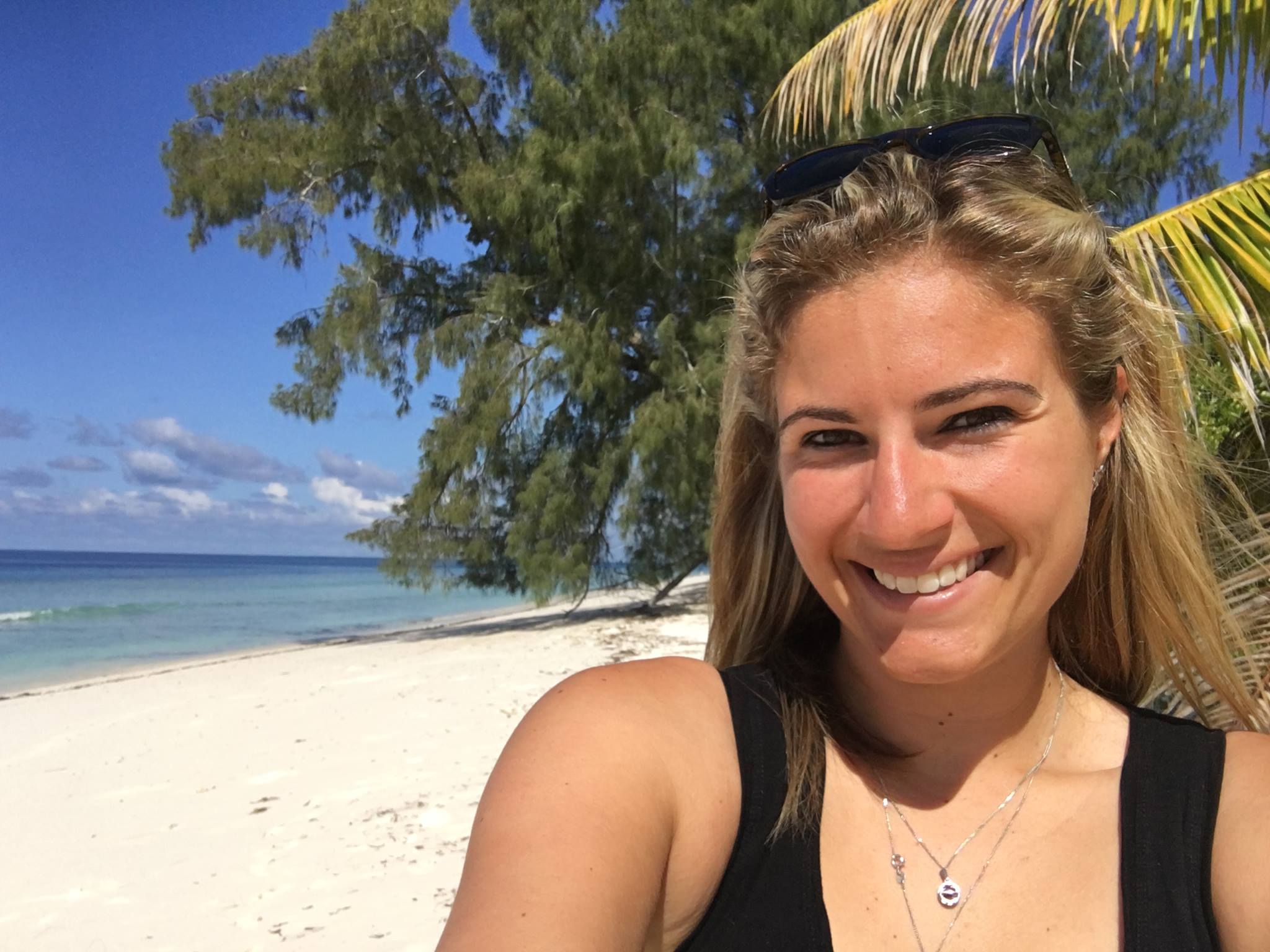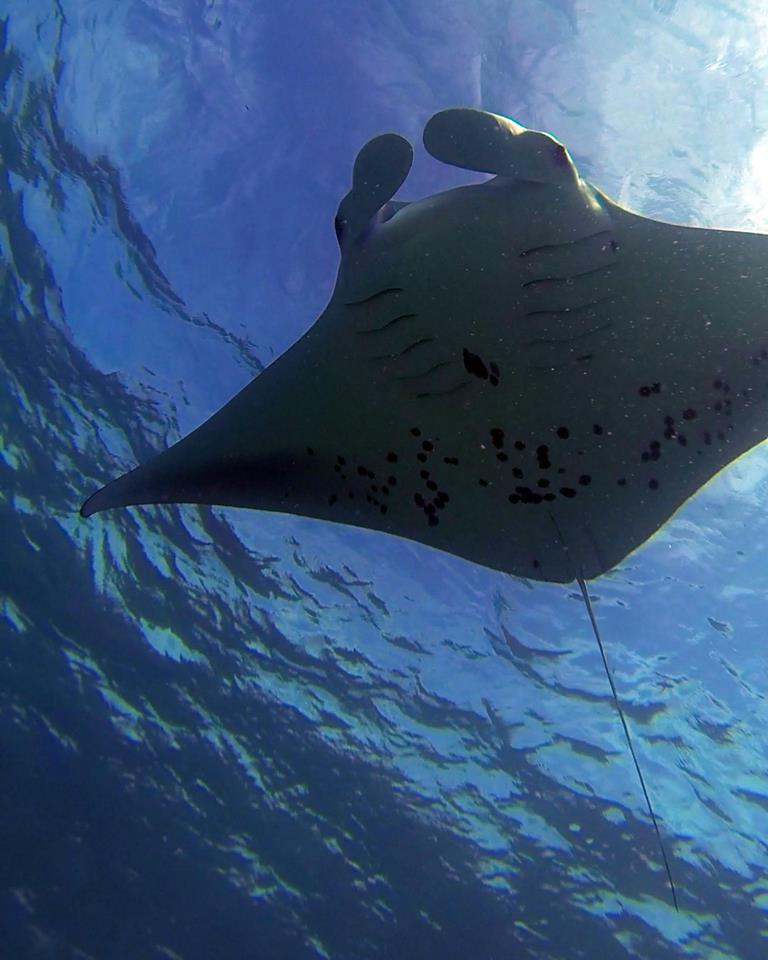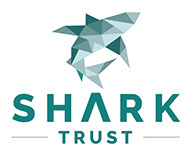News
Interview: Esther Jacobs talks to Lauren Peel, Seychelles Manta Ray Project

Lauren Peel has a BSc (Hons.) in Zoology from University of Western Australia. She is currently a PhD candidate in marine biology at University of Western Australia and project leader for The Manta Trust and Save Our Seas Foundation’s Seychelles Manta Ray Project.
EJ: How did you end up in science and research?
LP: I have always been in awe of the natural world and when I was five years old, my parents took me to the Ningaloo Reef in Western Australia. I could not get enough of snorkeling the reefs and exploring the intertidal pools to see what new creatures I could discover, and it was from that moment that my passion for the ocean and marine life was well and truly ignited. It wasn’t long before everyone knew what answer they would get when they asked me “What do you want to be when you grow up, Lauren?” – “A marine biologist!” I would say, with a huge grin on my face.
My fascination with the world around me drove me to complete my Bachelor’s degree in 2011 at the University of Western Australia, where I majored in zoology and chemistry. It was during my Honours year however, when I was working with Port Jackson sharks, that I discovered my love for all things elasmobranch. I knew then that I wanted to make a career out of studying these incredible animals and promoting their conservation through education, and I have been working towards achieving that goal ever since.
EJ: What’s your favourite species of elasmobranch?
LP: Tough question! In all honesty I do not think I can pick a favourite. I have been incredibly fortunate to work with a wide range of elasmobranch species and I have learnt so much from my experiences with each of them. One of the things that fascinates me the most about sharks and rays is the incredible amount of diversity that they display in everything from their body shapes to their life history strategies, so I think elasmobranchs collectively are my favourite.
EJ: You were a past field specialist for Oceans Research. Do you miss working with them?
LP: Yes I was, and it was a phenomenal two years that I spent working there. Although I do miss working with my colleagues and the white sharks, one of the best things about working in marine biology is the connectivity of researchers around the world – everyone knows everyone, and sometimes it feels like we are all from the same small town. This means that even though I am no longer based in Mossel Bay, I am still able to keep in touch with the scientists and staff who are there, visit them when I can, and plan future collaborations and research projects with them.
EJ: What was your favourite aspect of working with Oceans Research?
LP: There are countless things that I loved about working with Oceans Research, but my favourite thing would have to be working with the new interns each month and watching them learn the techniques that we used to study the diverse array of marine life present in Mossel Bay. From assessing the community structures present on the intertidal platforms, to tracking dolphins, and using photo-ID to count white sharks, no two days were ever the same and it was always exciting to share new experiences with the interns and research team.
EJ: What can you tell us about your past and / or current research?
LP: I first started studying elasmobranchs during my Honours year at the University of Western Australia where I studied the visual system of the Port Jackson shark (Heterodontus portusjacksoni). My research aimed to describe the structure and physiological function of the retina in this benthic shark species, and relate these findings to its behavior and ecology – it was so interesting. While I was completing my research project, I found out about the Oceans Research internship program and was an intern there for a month before returning as a Field Specialist for the next two years.
I am now working towards a PhD in Marine Biology; investigating the population dynamics, movement patterns and ecology of the Seychelles reef manta ray (Manta alfredi) population for the Seychelles Manta Ray Project with the support of the Save Our Seas Foundation, The Manta Trust, The Australian Institute of Marine Science, and The University of Western Australia, and I love it. The fieldwork for my research is based at the Save Our Seas Foundation’s D’Arros Research Centre, and it has been a fantastic and productive experience so far. For more information about this research, and lots of photographs and information about manta rays, people can follow the Project’s Facebook Page: www.facebook.com/SeychellesMantaRayProject.

EJ: What has been your most important scientific finding?
LP: Using a combination of acoustic and satellite telemetry, we are learning a lot about the movement and residency patterns of reef manta rays throughout the Amirantes Island Group of the Seychelles. Our acoustic tags are helping us to unravel the seasonal movement patterns of the mantas, and our satellite tags – the first to be deployed on any manta ray in the Seychelles – are showing us how far these animals travel and how they utilize the water column as they move. By pairing this information with the photo-identification component of the Seychelles Manta Ray Project, we are becoming better equipped to estimate the size of the Seychelles reef manta ray population as a whole.
EJ: Have there been any surprises?
LP: The Seychelles Manta Ray Project represents the first study of manta ray biology and ecology in the Seychelles, so we are learning new things about the reef manta population all the time. As individual manta rays can be identified by the unique pattern of spots that they have on their bellies, a key component of this project is to include as many people as possible in our research by encouraging them to submit photographs of the mantas they have seen throughout the country. The Seychelles is made up of 115 small islands spread across some ~1,400,000 km2, so we need as much help as possible to find the mantas and to record both who and where they are. It has been a fantastic experience networking with new people across the Islands, and it is always exciting when new manta rays are found, photographed, and added to our database.
EJ: What has been your biggest challenge?
LP: The biggest challenge for me so far was organizing and coordinating the first field trip for this project. Working on a remote island definitely has its difficulties and I had never organized an international field trip before. Needless to say, every hour of preparing paperwork, ordering equipment, and planning was worth it – I am still in awe of D’Arros Island and the manta rays that I am so lucky to work with and I’m now eagerly awaiting the next field season.
EJ: What’s more important, science or conservation?
LP: I think that science and conservation need to work hand-in-hand with each other in order to have the highest level of impact. Conservation strategies and outreach programs need to be scientifically-informed to ensure that resources are distributed effectively and that peoples’ efforts are directed to where they are most needed, and conservation programs can be a fantastic way of delivering scientific information to diverse groups of people on large scales. You can’t really have one without the other; they are both important.
EJ: What is the main goal of the Seychelles Manta Ray Project?
LP: The main aim of the Seychelles Manta Ray Project is to expand our understanding of the Seychelles reef manta ray population so that we can inform the development of targeted conservation strategies aimed at protecting their population in this region of the Indian Ocean. The results of this study will also be used to promote a more global view of the conservation needs of manta rays, which are currently listed as Vulnerable on the IUCN Red List of Threatened Species.
This research is made possible by generous funding contributions from the Save Our Seas Foundation (SOSF) and SOSF – D’Arros Research Centre, and through the support of the Ministry of Environment, Energy and Climate Change of the Republic of Seychelles.
EJ: Do you hope your research will aide in manta ray conservation?
LP: Very much so. One of the main reasons I decided to pursue a career in marine biology was because I wanted to share my passion for marine life and elasmobranchs with as many people as possible, and because I wanted to be able to contribute to the conservation of these incredible animals. Over the past 75 years, global manta ray populations have suffered drastic declines with numbers decreasing on average by 30% and losses as large as 80% being observed in some areas. These declines are caused by a number of anthropogenic factors, but are primarily driven by demand from the traditional Chinese medicine market for manta ray gill plates which are dried, put into a soup, and sold as ‘Peng yu sai’. It is believed that gill plates possess medicinal qualities that can benefit the consumer, yet there is no scientific evidence to support such claims.
Like most elasmobranchs, manta rays have an extremely slow reproductive rate – maturing at around 15-20 years of age and producing one pup every one to three (or even more) years – and this greatly compounds the impact of these fishing pressures. As I mentioned before, I believe that conservation and management strategies should be designed and implemented based on scientific evidence, and I hope the results of my research will allow for protective legislation – ideally at a national level – to be put in place for the manta rays of the Seychelles to ensure that their population can be protected long into the future.
EJ: What does conservation mean to you?
LP: To me, conservation means respecting the life and ecosystems around you, and making sure that future generations have the opportunity to experience all of the wonders of nature. It’s about promoting sustainability, and understanding that every decision we make in our life has an impact on the world around us.
EJ: Do you have any advice for anyone keen to follow in your footsteps?
LP: My advice would be to work hard, make the most of every opportunity you get given, and to network and volunteer whenever you can. Most importantly – be excited. The ocean is a massive and mysterious place and we still have so much left to learn about it, so never stop asking questions.
EJ: If the people who are reading this have their own photographs of manta rays, is there any way for them to get involved in manta ray research, too?
LP: Absolutely. If you have seen or photographed a manta in the Seychelles – or anywhere else in the world – you can contribute directly to the research and conservation of manta rays by submitting your images and sighting encounters through the Manta Trust’s online submission form. Alternatively, you can email your images to IDtheManta@mantatrust.org – but please don’t forget to let us know when and where you saw your manta(s).
The more information you provide, the more information we can give you on your encounter. We reply to each submission with details of the history of the manta ray that was photographed which includes information such as: the name of the manta, its ID number, its gender, its size, and where and when it has been sighted before. If you happen to spot a manta ray that has not been previously recorded, you can also choose its name.
Your help is greatly appreciated, so please take a few minutes to send us your manta images and/or sighting details and be proud of your role as a citizen scientist!
For information on Oceans Research and their internship opportunities visit www.oceans-research.com.
News
Spooktacular Underwater Adventure: Oyster Diving’s First Halloween Scuba Party at Mercers Lake

Last Thursday, Oyster Diving transformed Mercers Lake into a hauntingly unforgettable underwater realm for their inaugural Halloween Scuba Party. Approximately 20 intrepid divers plunged into the darkness, weaving through a mesmerising scene of spectral decorations, glow sticks, and eerie underwater pumpkins.


After the thrilling night dive, participants gathered to feast on a ghoulish spread of pumpkin soup, chilli con carne, and decadent fudge brownies, perfect fuel for the frightful festivities.

With a resounding success, Oyster Diving is excited to announce plans for this event to become an annual tradition. Next year, look forward to a fully licensed bar and live music, promising an even spookier celebration under the moonlit waters.

Join us next Halloween for an experience that promises to be a haunting delight!
Find out more about Oyster Diving at oysterdiving.com.
Marine Life & Conservation
Shark Trust launches Oceanic 31 Shark Art Auction

 After a two-year tour of UK art galleries, community spaces and aquariums, the Shark Trust’s acclaimed Oceanic31 exhibition takes its final bow at the Royal Geographical Society later this month. And the unique collection of artwork, depicting 31 species of oceanic sharks and rays, donated by 31 artists, is now open for bids from art lovers and shark enthusiasts. The online auction, launched today, will close on the 7th December at 8pm (BST). The money raised will support the Shark Trust Oceanics Programme.
After a two-year tour of UK art galleries, community spaces and aquariums, the Shark Trust’s acclaimed Oceanic31 exhibition takes its final bow at the Royal Geographical Society later this month. And the unique collection of artwork, depicting 31 species of oceanic sharks and rays, donated by 31 artists, is now open for bids from art lovers and shark enthusiasts. The online auction, launched today, will close on the 7th December at 8pm (BST). The money raised will support the Shark Trust Oceanics Programme.
People can now bid on 27 of the artworks by visiting this website:
https://superstars-auctions.com/sharktrustauction
It is a chance to own a beautiful piece of original art and to support the Shark Trust. The timing of the auction also means that these would make a very special Christmas gift for any shark-lover.
- Bigeye Thresher Shark by Janina Rossiter
- Carcharodon carcharias by Jimmy Higgs
- Croc VR 2030 by Tom Mead
- Oceanic Whitetip by ATM
- Silky Street by ScapaJoe
The diversity of pieces mirrors that of the sharks and rays they represent. You can bid on paintings, digital creations, sculptures, mixed media and more. You can pick your favourite artist or species of shark. Or you can select the perfect artwork to make a statement in your home or office. Whichever you choose, you will be supporting the work to protect these amazing animals.
One of the pieces of art has been selected to be auctioned live by Steve Backshall at the For the Love of Sharks event at the Royal Geographical Society in London on the 29th November. In addition to this, two further pieces will be raffled at this event, giving people a chance to win an incredible piece of shark art. For the Love of Sharks is the Shark Trust’s flagship evening. A night to celebrate sharks. Steve Backshall is the headline speaker at this event that will see other prominent shark advocates join him on stage.
Tickets for the event can be snapped up here:
https://thesharktrust.org.uk/Event/flos24
Those that would like to see the Oceanic 31 exhibition have one final chance. It is being displayed at the Pavilion at the Royal Geographic Society from 26th November until the 7th December. Entry is free.
Find out more here:
https://www.rgs.org/events/upcoming-events/oceanic-31
Paul Cox, Shark Trust CEO, Said “This exhibition has given us the opportunity to reach out to a new audience. And inspire more people with the wonderful sharks and rays on which our Big Shark Pledge campaign is based. We are immensely grateful to the 31 artists who have worked so hard to create these works.”
Bid for your favourite Oceanic 31 artwork here:
https://superstars-auctions.com/sharktrustauction
Banner Image: Smooth Hammerhead by Alicia Hayden
-

 Blogs3 months ago
Blogs3 months agoGozo: An Underwater Treasure Trove in the Heart of the Mediterranean
-

 News3 weeks ago
News3 weeks agoIconic SS United States to become the World’s Largest Artificial Reef
-

 Blogs2 months ago
Blogs2 months agoNovoScuba’s Game-Changing Approach for Dive Store Owners: WE PAY YOU!
-

 News1 month ago
News1 month agoBook Review – 52 Assignments: Underwater Photography
-

 Marine Life & Conservation3 months ago
Marine Life & Conservation3 months agoBook Review: Sharkpedia
-

 Gear News1 month ago
Gear News1 month agoDYNAMICNORD – New German diving brand enters the British market
-

 News1 month ago
News1 month agoExploring Cenote El Pit: A Diver’s Dream
-

 Blogs3 months ago
Blogs3 months agoFreediver Christian Redl Sets His 13th World Record at Lake Neufeld




















